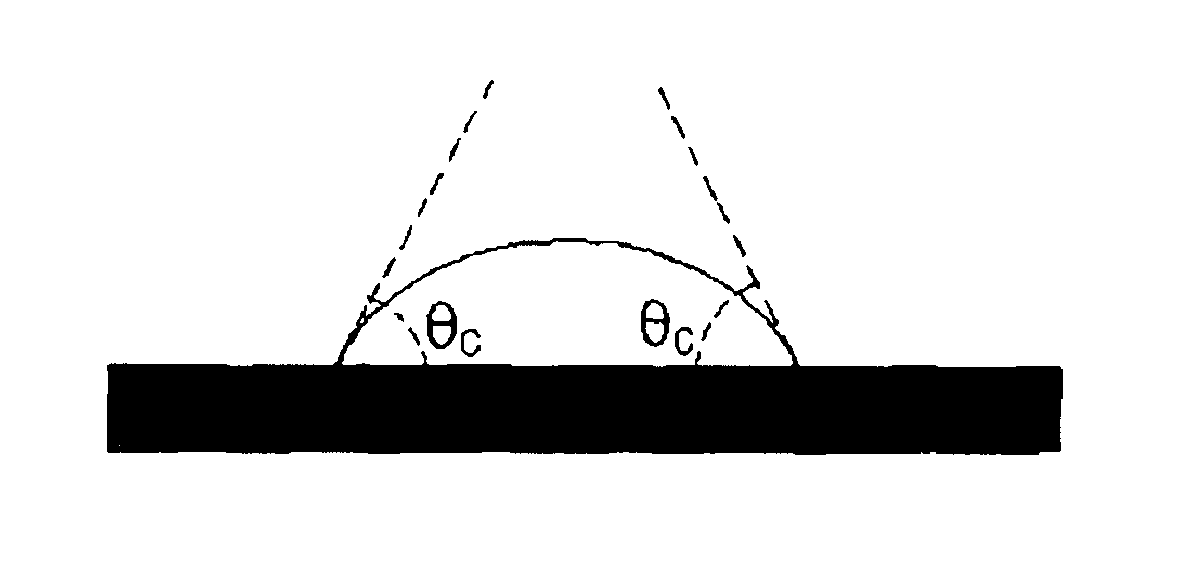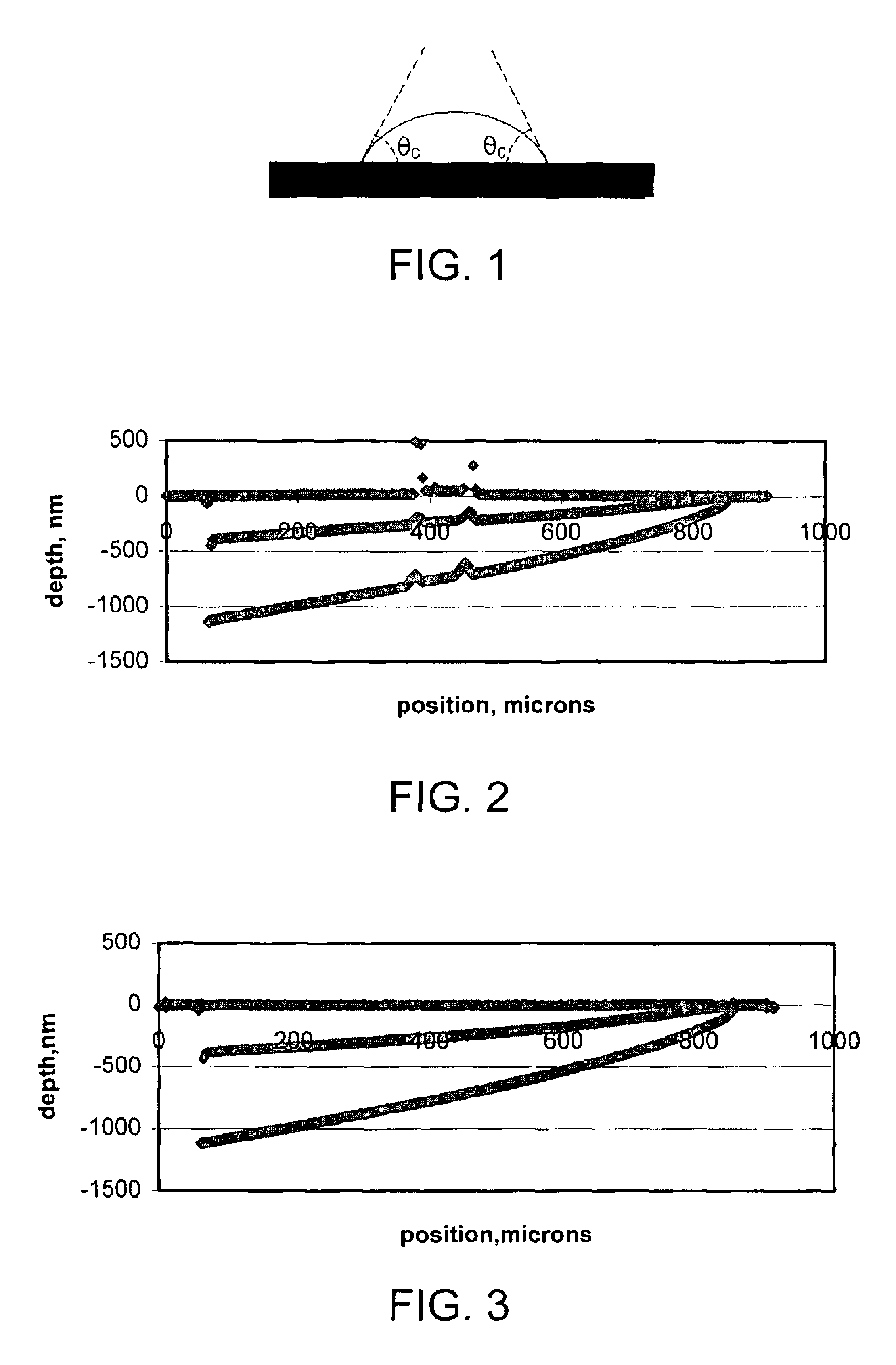Water-removable coatings for LCD glass
a technology of water-removable coatings and glass, which is applied in the direction of other chemical processes, instruments, packaging, etc., can solve the problems of glass being easily contaminated with organic contaminants, unable to meet the needs of many applications, and scratching of glass surfaces, especially near the edges of the surface, so as to achieve the same chemistry and smoothness
- Summary
- Abstract
- Description
- Claims
- Application Information
AI Technical Summary
Benefits of technology
Problems solved by technology
Method used
Image
Examples
example 1
Four starches (PURITY GUM 59, N-TACK, NADEX 772 and CRYSTAL TEX 627) were obtained from National Starch and Chemical Company (Bridgewater, N.J.) and a fifth (EMSIZE CMS 60) from Kalamazoo Paper Chemicals (Richland, Mich.). These starch products are produced by hydrolyzing raw starches using an enzyme or acid. Although they are all made from raw starches, they have different molecular weights, pH's, and chemical modifications. They are also made from different raw materials.
Table 3 describes some of the differences among these products. All these products are polydispersed and thus they have a relatively broad molecular weight distribution, with the weight average molecular weight being less than the natural starches and more than 5,000. EMSIZE CMS 60 has the highest average molecular weight, with PURITY GUM 59 being the next highest. The lowest average molecular weight products are CRYSTAL TEX 627 and NADEX 772.
Seven METHOCEL brand cellulose ethers acquired from Dow Chemical (Midlan...
example 2
Three of the starch coatings of Example 1, i.e., PURITY GUM 59, CRYSTAL TEX 627, and EMSIZE CMS 60, were tested for their particle protection ability.
In outline, the experimental procedure used included the following steps: (1) pre-clean glass substrates and measure initial particle count; (2) dip-coat substrates and air-dry the coating; (3) heat substrates for 2 minutes; (4) contaminate substrates with glass particles by scraping edges of two pieces of LCD glass on uncoated control and coated substrates; (5) age the particle-contaminated substrates and all controls in a humidity chamber with 85% humidity / 85.degree. C. for 7 days; (6) clean the substrates; and (7) count particles on cleaned substrate.
The change in particle count on a substrate was obtained by comparing the particle count before and after the process. Particle protection effectiveness of a coating was estimated by comparing particle density changes on coated and uncoated substrates.
Particle contamination and aging we...
example 3
Nano-indentation scratch tests were performed on glass substrates which were coated with CRYSTAL TEX 627 (5% solution) using the techniques of Example 2. The results are shown in FIG. 2. Each of these graphs contains three line traces representing the surface profile along the scratch path before scratching, during scratching (under load), and after scratching (load removed). In particular, the top curve is a PROFILOMETER trace showing the pre-scratch surface profile, the bottom (deepest) trace shows the penetration of the scratch tip during the scratching process, and the middle trace shows the final depth of the scratch following elastic recovery. The estimated thickness of the coating was 1500 nm.
Neither this data nor microscopic examination showed any indication of a complete penetration through the coating to the glass interface. This was true even with load levels up to a peak load of 160 mN (16 grams).
FIG. 3 shows a corresponding set of traces for a coating that had been expo...
PUM
| Property | Measurement | Unit |
|---|---|---|
| contact angle | aaaaa | aaaaa |
| thickness | aaaaa | aaaaa |
| surface roughness | aaaaa | aaaaa |
Abstract
Description
Claims
Application Information
 Login to View More
Login to View More - R&D
- Intellectual Property
- Life Sciences
- Materials
- Tech Scout
- Unparalleled Data Quality
- Higher Quality Content
- 60% Fewer Hallucinations
Browse by: Latest US Patents, China's latest patents, Technical Efficacy Thesaurus, Application Domain, Technology Topic, Popular Technical Reports.
© 2025 PatSnap. All rights reserved.Legal|Privacy policy|Modern Slavery Act Transparency Statement|Sitemap|About US| Contact US: help@patsnap.com


